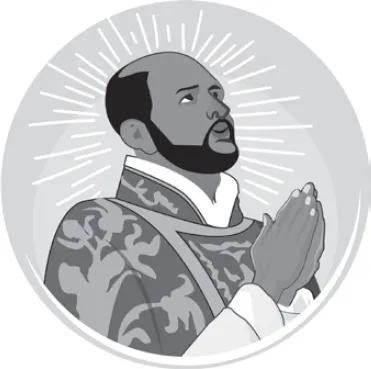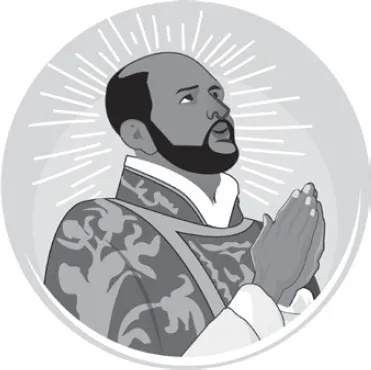![]()
1
Ignatius’s World (1491–1521)
Historians tend to agree that Ignatius was born in 1491 in the Basque region of Spain, the year before Columbus made his voyage to the Americas. The European arrival in the Americas was an earthshattering event. It was the dawn of a new age in Europe. New artistic techniques and the ‘rediscovery’ of classical Rome and Greece were sparking the emergence of what is now called the Renaissance. In many ways, these changes were in marked contrast to the world Ignatius grew up in, which owed more to the Middle Ages than what was happening elsewhere in Europe.
Ignatius’s world was that of the court, with kings, princesses and chivalry. Even the religious debates that shattered the unity of the Western Church were not part of Ignatius’s early life. The Catholic monarchs Isabella and Ferdinand embarked on a series of reforms within the Spanish Church, many of which would later be adopted by the Council of Trent (1545–63). Their reforms influenced what would come to be called the Counter-Reformation. It is worth noting that there was a good deal of stability in the early life of Ignatius. This stability would not be challenged for the first two decades of his life.
Comfortable people aren’t inclined to question their surroundings too much, which was very true of Ignatius. In his Autobiography, which he dictated to one of his companions and throughout which he refers to himself in the third person, Ignatius said about his early life, ‘Up to his twenty-sixth year he was a man given to worldly vanities, and having a vain and overpowering desire to gain renown’. In life, it is easy to think of times when I have been preoccupied with myself and have concentrated exclusively on personal gain. For Ignatius, this took the shape of being fêted in his courtly world. Today, it might be a promotion at work, a new car, or a holiday home in Spain – something that might give exterior satisfaction but may not produce inner fulfilment.
Ignatius was an outward-looking young man who seems to have given little attention to his relationship with God. Given the nature of religious practice at the time, it can be assumed that he practised his faith in the superficial way expected of people within the courtly world. Religious observance was part of his life, but it is not known what kind of relationship he had with God before his conversion. Given Ignatius’s preoccupation with his quest for fame, it is likely that God did not get much attention from him, except perhaps that Ignatius might have prayed to be showered with glory and prestige. Everyone can relate to moments in life when the focus was on what God can do for me, rather than what I can do for God.
Time to Reflect
Looking at Ignatius’s life during this early period might help you to reflect on where you are right now in your life. Perhaps this is a good point to pause and ask some questions:
1. How do I relate to God? If I practise my faith, do I do so because I think it is expected of me, or do I desire to have a more personal encounter with God?
2. Am I preoccupied with bettering myself materially? When I pray, what do I pray for most often? Do I focus on what I want from God, or do I ask God to be shown what I can do to serve others?
3. What about the early life of Ignatius matches up with where I am in life? Is this a bad thing or a good thing?
![]()
2
The Battle of Pamplona (May 1521)
The Church has many saints who were soldiers, such as Joan of Arc. Ignatius is often associated with the image of a soldier. It is ironic that so much emphasis is placed on his life as a soldier. Much of his early life was dedicated to what would have been called chivalry, not soldiering. Such a life involved mixing with the rich and powerful, enjoying the finer things that life had to offer and going into battle when necessary. Ignatius did mix with the rich and powerful and it seems he also indulged in the finer things of life, but he only had to go into battle once.
The life of a soldier in Ignatius’s time was far from glamorous. It was mostly confined to the poorer classes, who were obliged by feudal loyalties to fight for their masters or who sold their services for money as mercenaries. Their lot in life was very far removed from the world Ignatius was born into. Compared to Joan of Arc, Ignatius’s military prowess was relatively limited. Much of his life before the Battle of Pamplona was lived out in service rather than in combat. In a modern context, a courtier was something akin to a groupie attached to a rock band, who loyally follows the group. In Ignatius’s time, the court would have travelled around surveying their domains, and Ignatius would have followed accordingly.
While Ignatius might not have been a soldier as you or I know it, military matters certainly played an essential part in his frame of reference. In his Spiritual Exercises, Ignatius relies on military analogies to bring his meditations to life. He talks about battle standards, armies, the storming of fortresses, and so on. Such imagery would have been familiar to him. These things sparked his youthful imagination in a way similar to what science-fiction does for young people in today’s culture. I am sure had Ignatius been an accountant by profession, this background would have influenced the imagery within the Spiritual Exercises. While I am not trying to do away with the image of Ignatius as a soldier, I think a little context is necessary.
In his Spiritual
Exercises, Ignatius relies on military analogies to bring his meditations to life. … Such imagery would have been familiar to him.
Ignatius’s world was one where the monarchies of Europe regularly contested one another for power and territory. These contests were often played out by the more prominent countries like France or Spain, who interfered in smaller kingdoms, such as Navarre, which bordered France and an emerging Spain, interfering in smaller kingdoms, such as Navarre, which bordered France and the emerging Spanish kingdom (the marriage of Isabella of Castile and Ferdinand of Aragon in 1469 would see much of the Iberian Peninsula united under their rulership, and eventually, these territories became Spain). For over ten years, the Spanish fought to gain control of the Iberian portion of Navarre. An important location in this struggle was the town of Pamplona, which was contested by both sides numerous times. The most famous of these clashes came in 1521 when the Navarrese and French tried to recapture the city.
In May 1521 Pamplona was held by forces loyal to the Spanish crown. Amongst those charged with the defence of the town was Ignatius of Loyola. The garrison commander quickly realised that defending Pamplona would not be easy and that it might be more prudent to abandon the city and fight another day. The impetuous Ignatius was horrified at the thought of avoiding a fight. As I mentioned earlier, this was Ignatius’s first real experience of battle, so he was probably more focused on making a name for himself than the practicalities of combat. The young Ignatius must have possessed some charm because he convinced the commander that the town should be defended.
In the Autobiography, Ignatius confirms the hopelessness of the situation which faced the defenders: ‘while everyone else clearly saw that they could not defend themselves and thought that they should surrender to save their lives, he offered so many reasons to the fortress’ commander that he talked him into defending it. Though this was contrary to the opinion of all other knights, still each drew encouragem...



